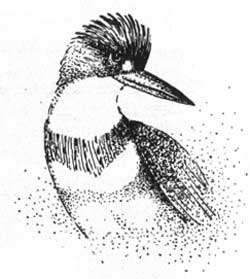

|
IN recognition of his work on the algae of the Bass limestone, Algonkian age, in Grand Canyon, Dr. David White of the U. S. Geological Survey has received the first of the Charles Doolittle Walcott Medals. This award was offered some years ago by Mrs. Walcott as a memorial to her husband, eminent paleontologist of the Smithsonian Institution, who specialized in studies of the earliest form of life, found in Cambrian and pre-Cambrian rocks. The Walcott medals are given in recognition of outstanding contributions to the knowledge of pre-Cambrian rocks.
Dr. David White is well known to students of the Grand Canyon, not only for his work on the 'oldest traces of life', but also for his detailed studies and reports on the Permian flora as found in the Hermit shale and Supai formation. Dr. White spent several field seasons prior to and including 1929 carrying on his investigations in the Grand Canyon. ********** The exact status of the coyote found commonly on the South Rim of Grand Canyon has for some years been in doubt. Recently a specimen collected from the Berry ranch, bordering on the south boundary of the park, was sent to the Bureau of Biological Survey where subspecific determination was made. Dr. W. B. Bell writes that this specimen proves to be Canis latrans mearnsi, the Mearns Coyote. ********** The Great Basin Rattlesnake, Crotalus c. lutosus, was collected by the writer on the east wall of Toroweap Valley about four miles above the Colorado River on April 10. Two days later another specimen was found dead on the east base of Mt. Trumbull. These specimens are of especial interest since they represent the first records of this species from the vicinity of Grand Canyon. They may possibly also represent the first definite records from the state of Arizona, although a juvenile specimen, possibly of this species, but of uncertain identity, has been collected at Jacobs Lake, and Klauber (personal communication, April, 1934) states that he has seen specimens of the Great Basin Rattler from Kanab, Utah, some of which were probably collected across the border in Arizona. The Toroweap specimen was sent to Mr. L. M. Klauber of the San Diego Museum, who kindly verified the identification with the following statement: "As stated in your letter, this is undoubtedly the subspecies Crotalus c. lutosus, the color and pattern being quite characteristic of specimens from southern Utah. The dorsal blotches, which are almost black, are especially different from the pattern of C. c. abyssus (Grand Canyon rattler). This is a most interesting find, verifying the supposition that C. c. abyssus is almost entirely restricted to the Canyon itself." E. D. McKee ********** 
The Western Belted Kingfisher, Megaceryle alcyon caurina, was seen at a tank near Pasture Wash Ranger Station, South Rim, on April 28. This is the first record of this species from the South Rim, and was a decided surprise to the observer. E. D. McKee ********** The first fawn Mule Deer to be reported this year from the South Rim was seen by Mr. Julius Gaustad, electrician working on the telephone line, on May 23. Mr. Gaustad stated, "The fawn appeared to be about a day old and was not very lively." It was seen just east of the south entrance road, a few miles from the village. ********** On March 26 & 27, 1934, I obtained some accurate measurements of the growth of a Century Plant (Agave utahensis) on the Tonto Platform along the Clear Creek Trail about four miles from Phantom Ranch, the results of which are given here with. March 26th. 9:00 AM. 32-7/8 inches above the ground. H. A. Montgomery, | ||||||
| <<< Previous | > Cover < | Next >>> |
vol9-3e.htm
14-Oct-2011